Three Flavors of Asia — Singapore, Malaysia and India

Karen converted to Islam this trip… not. She needed to put on this robe in order to enter a mosque in Kuala Lumpur. She wouldn’t tell me what she was praying for, but I like to think she was thanking Allah for Her Man:)
KR and I just spent 14 days in Malaysia, Singapore and India as I tried to add to the Network for Global Innovation membership roster. Singapore is one of the more go-go places we’ve been to, very similar to Hong Kong and Seoul in feel. Kuala Lumpur is a Muslim-run country stuck halfway between modernity and the way it use to be. And India, well India is a whole different bag with huge swaths of the very poor surrounding pockets of extreme wealth (the richest man in India has built himself a real skyscraper as a home in downtown Mumbai).
We’ve now been to Hong Kong, Shanghai, Beijing, Seoul, Tokyo, Singapore, Kuala Lumpur, Delhi, and Mumbai in the past year, which is a pretty good sprinkling of Asia. One can’t help but notice that air pollution is a pan-Asian problem as each of these places wears a gray blanket of smog that literally blocks the sun most of the time. Gray is the new black in Asia. Asia is creating pollution on a scale that’s hard to imagine. (BTW, many Asians think its “their turn” to industrialize in order to catch up with the West. They argue we polluted big time during our industrial revolution and now we’re crying foul when we started the problem. There’s some merit to this argument).
Most of these places are huge. Delhi is the second most populated city in the world with Shanghai, Beijing, Mumbai and Tokyo all having way more than 20 million people each. China has 1.3 billion people and India has 1.2 billion. Their 2.5 BILLION+ people are burning fuel as fast as they can find it to build their middle classes. This fuel is mostly coal; incredibly cheap and incredibly dirty. To get a sense of the scale we’re talking about, take a look at this chart.

The scale on the right hand side says it all. And this is just China. Not India, Malaysia, Indonesia, Thailand, and the rest of Asia which have the same needs and usage patterns.
Looking at how China and India are handling this problem is reflective of their systems of government. China’s central government is making sweeping changes, calling for things like the shuttering of Beijing’s last coal plant in 2016. India can make no similar move as India has a strong local democracy in which 29 states determine energy policy to a large extent. The Prime Minister can set the vision, but Modi can’t decree it like the Chinese Commi’s. Authoritarian governments can make things happen… or else:)
Singapore is an interesting case in point on how “control” can deliver good things. While Singapore has a form of democracy, its a society that’s notoriously rule-oriented. For instance, Singapore doesn’t have a traffic problem because it costs $150K just to get a permit to own a car. You want a taxi? You can stand out in the street until hell freezes over watching empty cab by empty cab drive by. Walk to a taxi stand and presto a cab appears immediately:) Everyone jokes that its illegal to chew gum in Singapore because the residue might end up on the street, but it is illegal! But the streets are damn clean. And Singaporeans actually drive in the lanes that are painted on the street unlike Malaysia and India in which lane markers are totally ignored. Singapore is working pretty well for Singaporeans as one out of six families in Singapore have a net worth of at least one million dollars. We’ve never found more knowledgeable and happy cab drivers than in Singapore either. I received our best economic lesson from one happy cabbie as he explained the difference between Singapore and Malaysia (Singaporeans care about one thing in government: will the policy work? Malaysia cares whether it corresponds with the Muslim faith… whether it works or not is at least second in priority.
We spent the most time in India – about a week first in Delhi (the government capital) and then Mumbai (the financial center) and Ahmadabad (university town). I’m still conflicted about India and frankly don’t know what to make of it. On the one hand there are so many poor people everywhere that we were a constant target of the street hustle. It’s part of the way of life; if you don’t ask for it, push it, seize it or drive through it, someone else will:) Yet, we were taken care of really well by Indian citizens that we met and the entire staffs of every hotel we stayed in.
I could never figure out if there was a middle class in India. There was a ton of squalor on the side of almost every road and street. There were dilapidated apartment buildings on crowded, narrow streets that we American’s would consider part of a ghetto. One out of a 1000 buildings had paint on it, fresh or not. But, maybe this is their middle class, much like grading on the curve. Is it fair to compare the US’s idea of Middle Class with Indians? I doubt it.
More than anything, India strikes me as a place in which infrastructure of any kind — roads, electricity, waste, water, buildings — was hopelessly overrun long ago and it will never catch up. 60% of the liquid human waste in Mumbai is dumped directly into the sea. Every building of any size has its own generator and even these aren’t enough to deliver electricity all the time. Most places have regular 2-4 hour periods of no electricity. In India, 350 million people — the size of the US’ total population — will never experience electricity in their life times. In a world like this, what do you do? Fend for yourself.
Perhaps because of this striking contrast, the rich live very well. The hotels we stayed in were world class — the Taj Mahal Palace (Mubai), the ITC Maurya (Delhi) and the Majestic (KL). BTW, we could never have afforded these hotels except that the dollar is ridiculously strong against almost any currency in the world — go travel now while its cheap(er)! We were treated to a new level of service that frankly we’ve never experienced anywhere in the world. Service happily provided with genuine warmth and thoughtfulness. I admit it was nice to come back from a day of meetings/traffic to the cocoon of the Taj or ITC. One could get use to this:)
Here’s what the trip looked like in pictures…
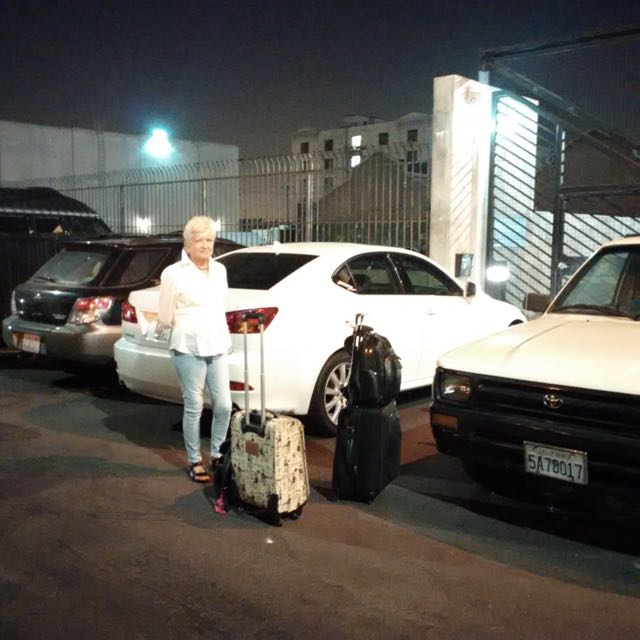
Most trips west to Asia start late at night. Our flight left close to midnight on Friday and we arrived in Kuala Lumpur mid afternoon on Sunday. Here KR stands in front of our apartment in downtown LA awaiting a taxi.

We had a half day free in Kuala Lumpur and KR wanted to do some sight seeing. So, we came here to a huge Buddha statue with a unique temple inside the cave up those stairs. And yes, we humped those stairs in 90 degree heat. This is fun? I’ll take that meeting now, thanks.
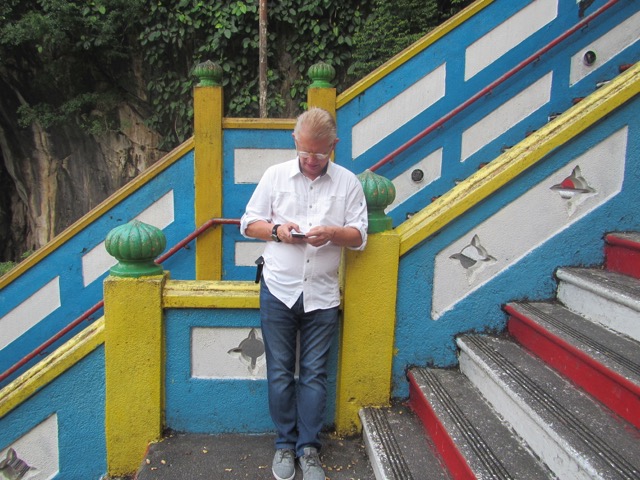
While KR is looking at the temple, I’m getting the financing in place for our next vehicle via texting.
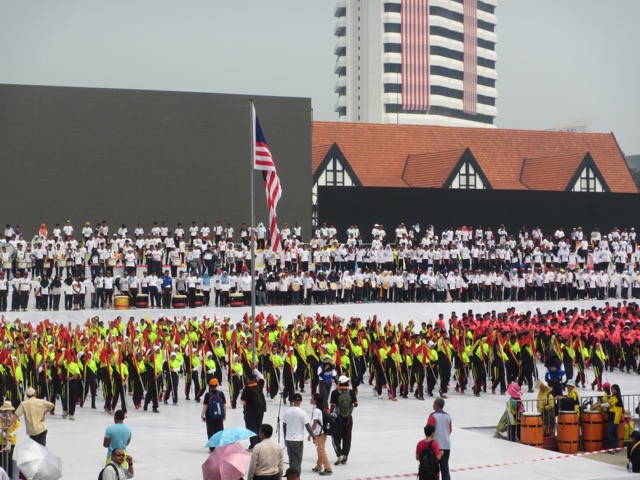
We got lucky and happened on a practice session for Malaysia’s independence day celebration. A couple of thousand people were dancing, marching, playing instruments in 90 degree weather. It was impressive.

My new love; afternoon tea British style. Nothing like scones and tea with jam and clotted cream. At the Majestic Hotel, no less.
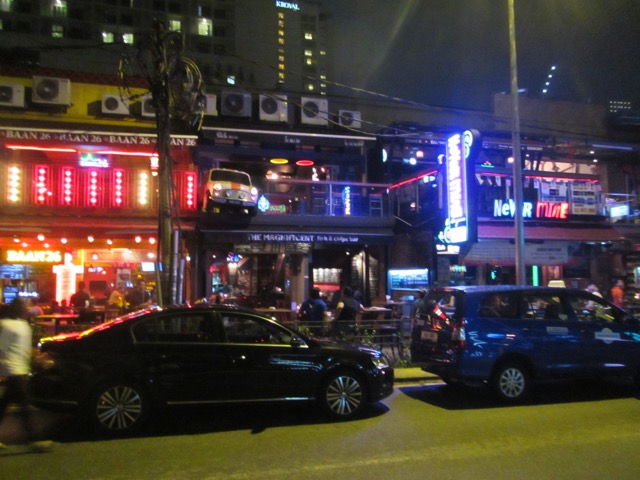
Of course, we always find the night life in any city, and Kuala Lumpur was no different. Big English speaking population and thus lots of restaurants with names we could read

The Marina Sands hotel/casino on the left consists of three towers topped off by a three football long infinity pool.
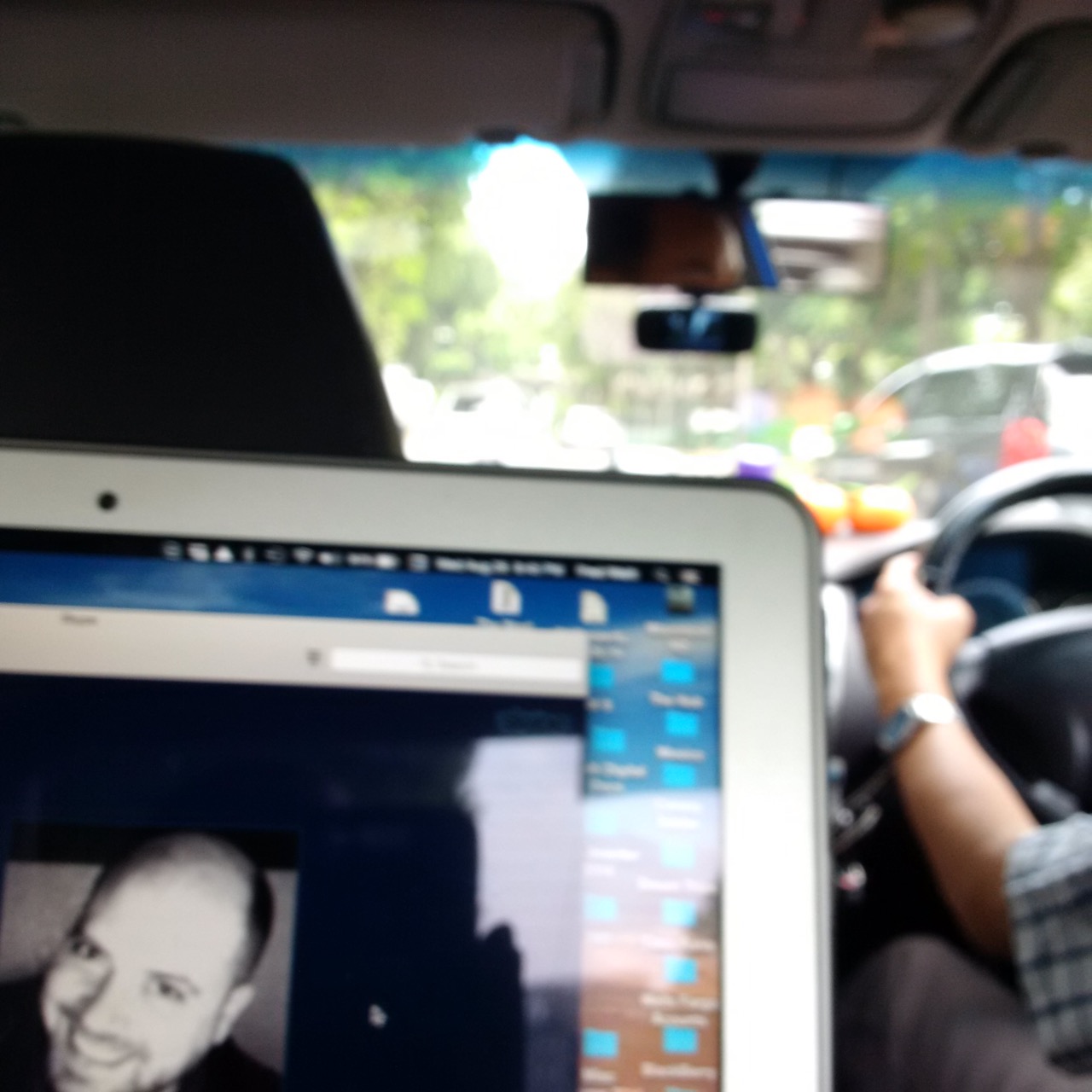
Technology at work:). In a Singapore taxi on the way to a meeting while Skyping with Dan W on my computer while connected to the Internet via a mobile hot spot.
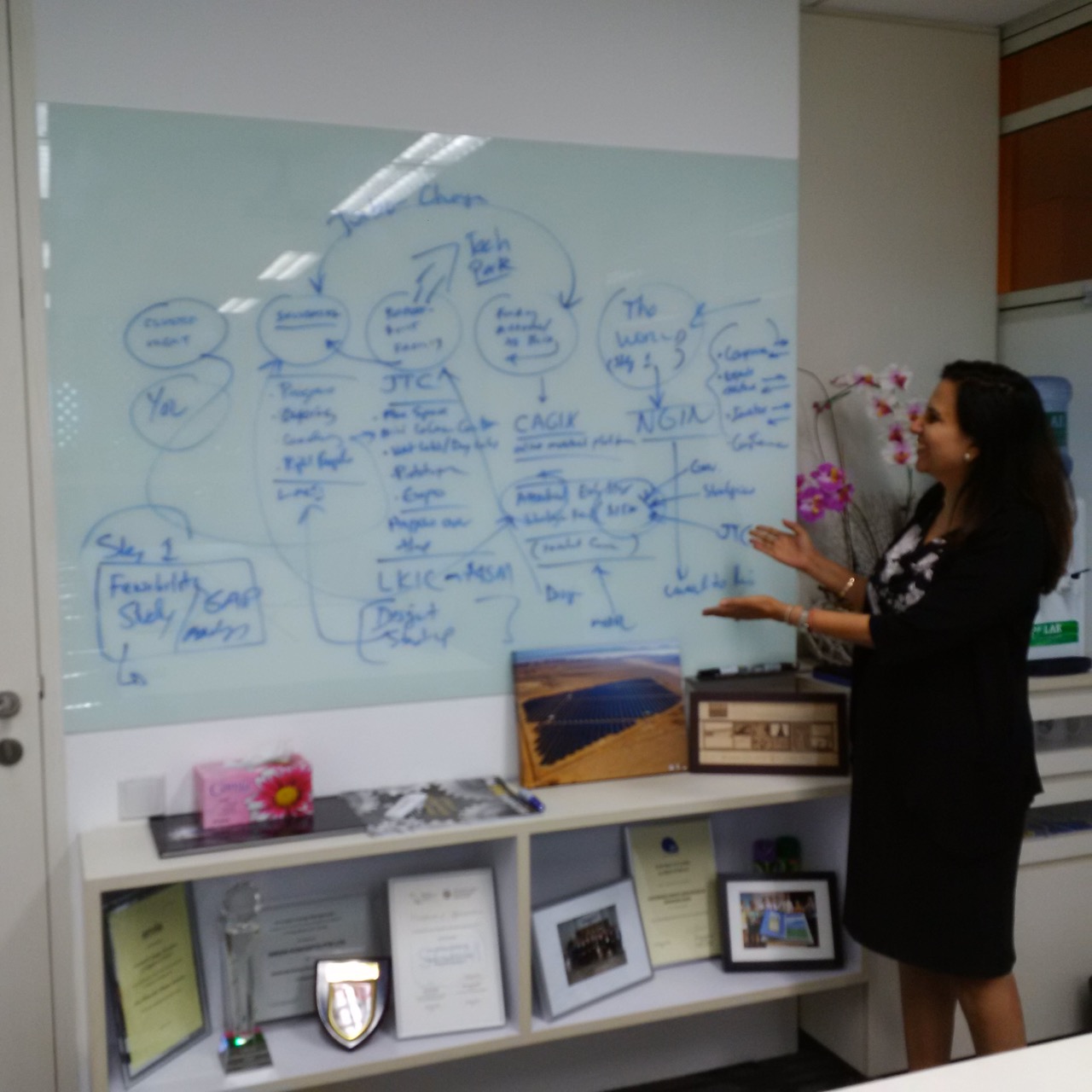
This poor lady had to withstand an hour long “brainstorming” session in which I drew the thing on the white board:)
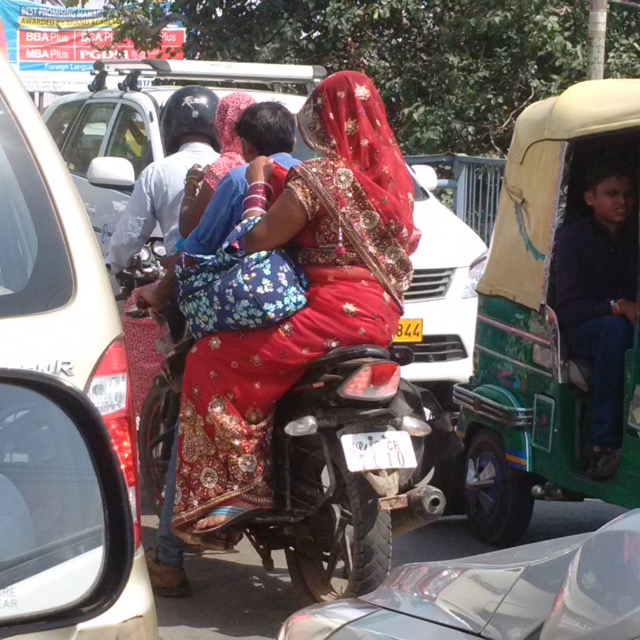
Guess where we are now? Delhi, India of course. This is a normal family “sedan.” I count five people on this scooter.

And then there’s the world of the rich and foreign. My favorite hotel among many great ones, the ITC Maurya in the Diplomatic Enclave in Delhi. The ceiling is a painted mural that is perhaps the most beautiful painting I’ve ever seen. Service is in another stratosphere. Karen got sick and in less than 30 minutes there was a doctor at our door on a Sunday afternoon.
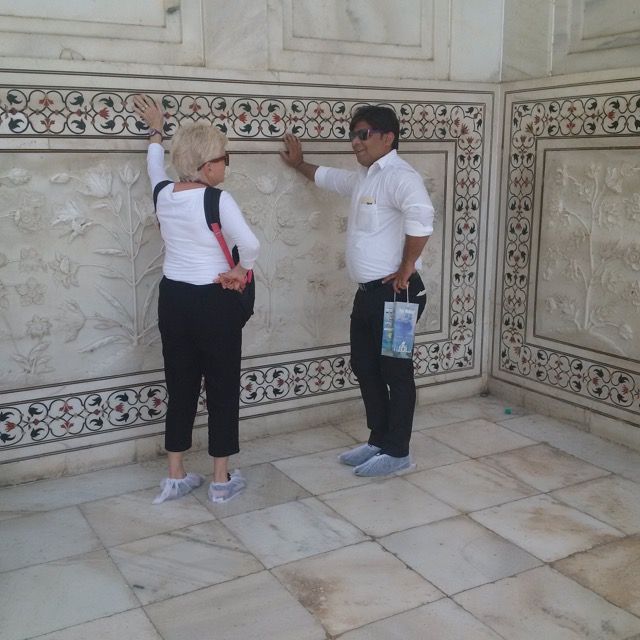
The fine detailing of the gems set in the marble aren’t appreciated from afar. Karen and our guide talk art.

Back in the other world, I have dinner with an Indian executive at this country club. Here he greets business associates just hanging after a hard day on the links.

Five minutes walk from the Taj is this neighborhood apartment building. Since there are cars in the parking lot, I assume its a middle class apartment building.

Scattered throughout the neighborhood are these very large colonial mansions falling down. They’re inhabited by dogs, birds and a guard. Anything worth stealing was gone long ago
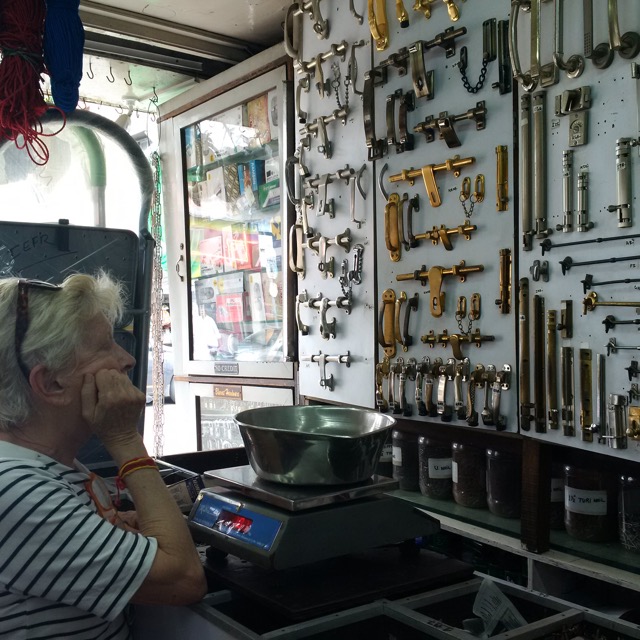
We travel literally half way around the world so KR can find some window latches for Corona Adobe. Go figure. We bought 30+ latches in this small hardware shop.

At first I wondered why bikes only had panniers on the right side, then I saw this rack on the left and I finally figured it out — the rack is for women in India who almost all ride side saddle
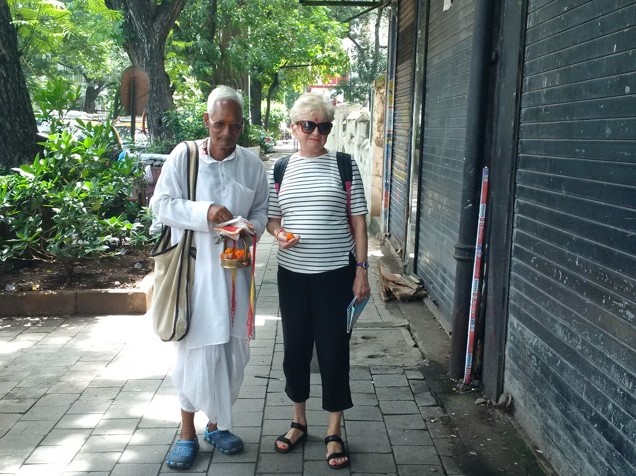
Fifty feet outside the Taj and this guy came up wanting to give us some flowers and put a red mark on our foreheads for luck. The red dot on the forehead has nothing to do with luck, it just marks us as easy-targets for every street hustler in Mumbai


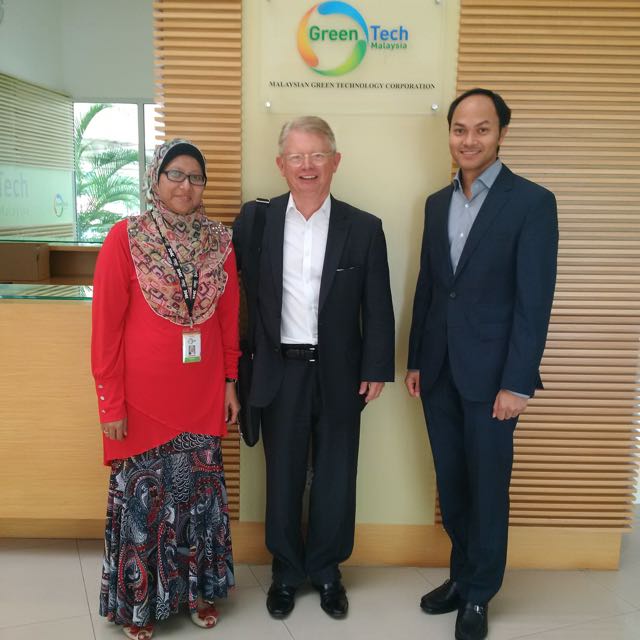

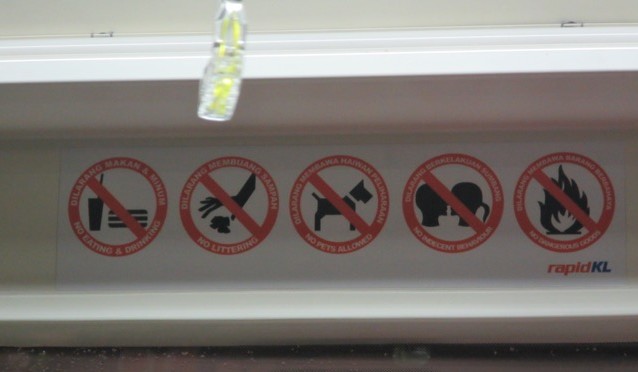
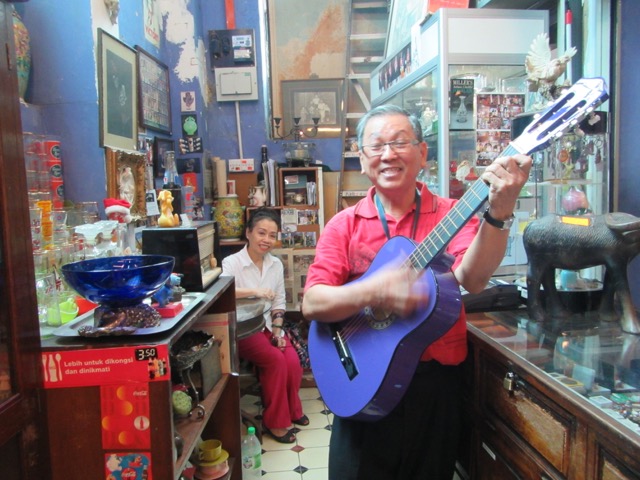

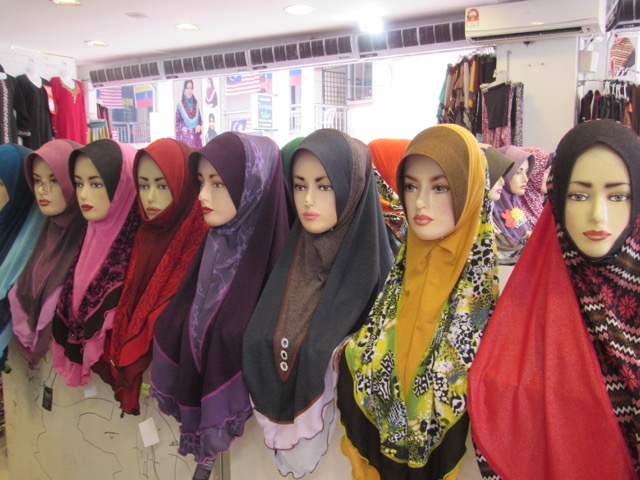
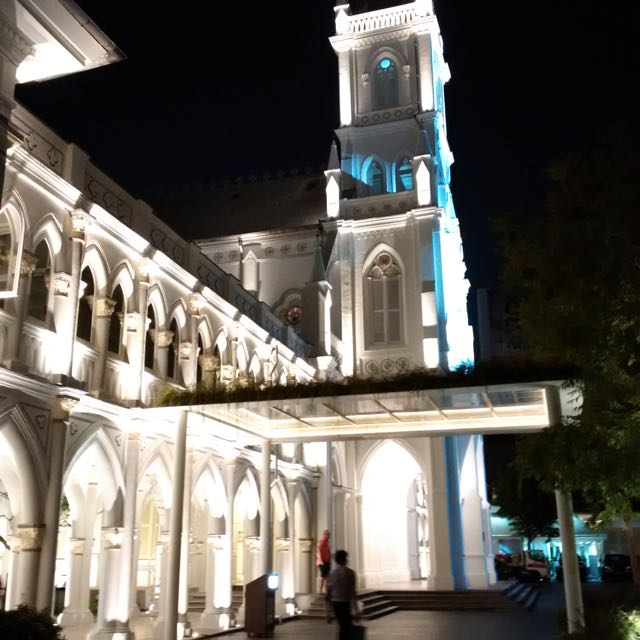



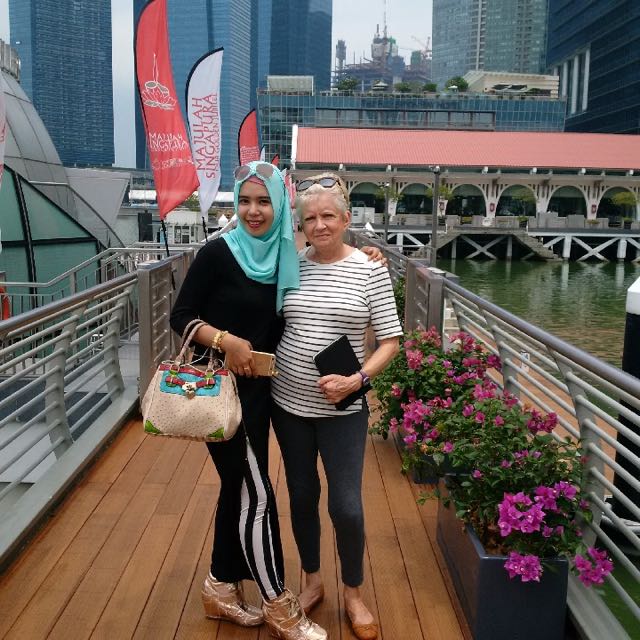
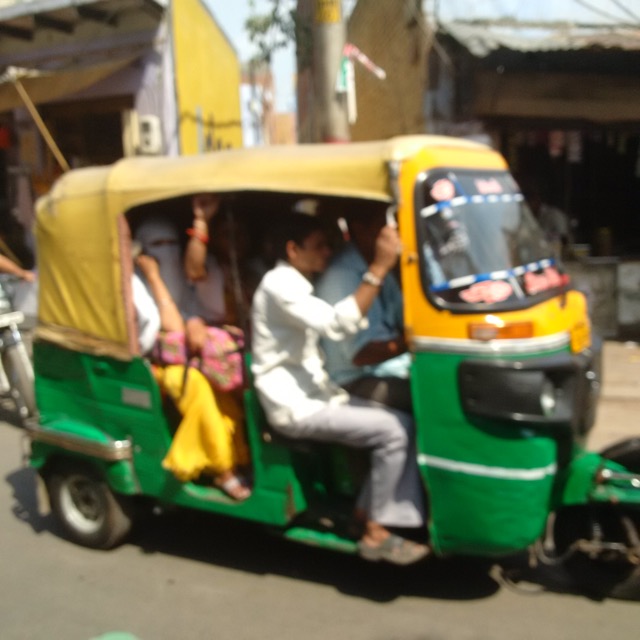
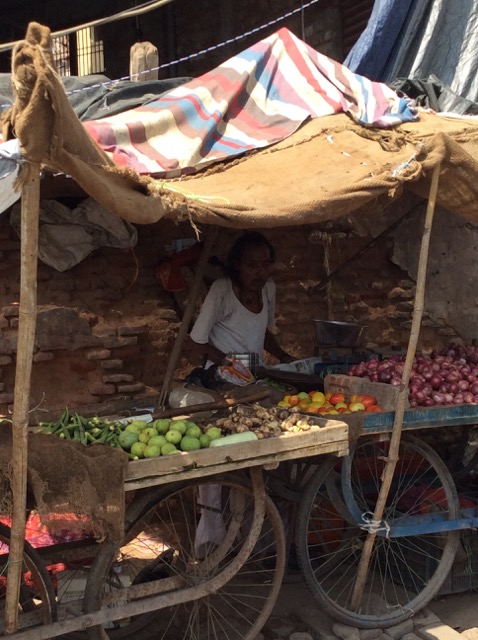


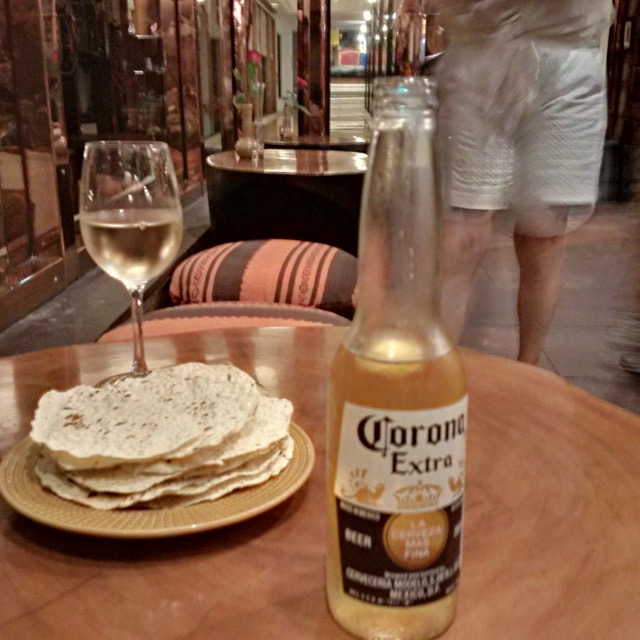

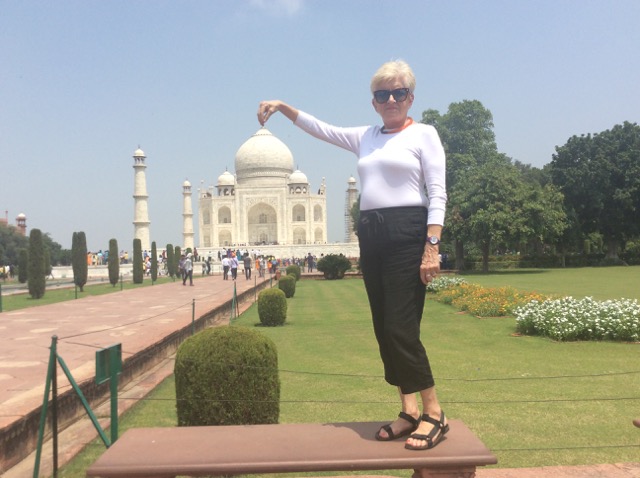

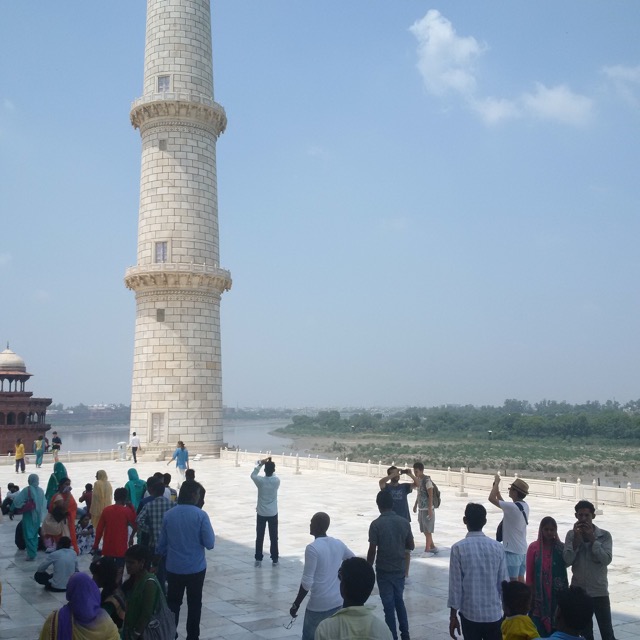


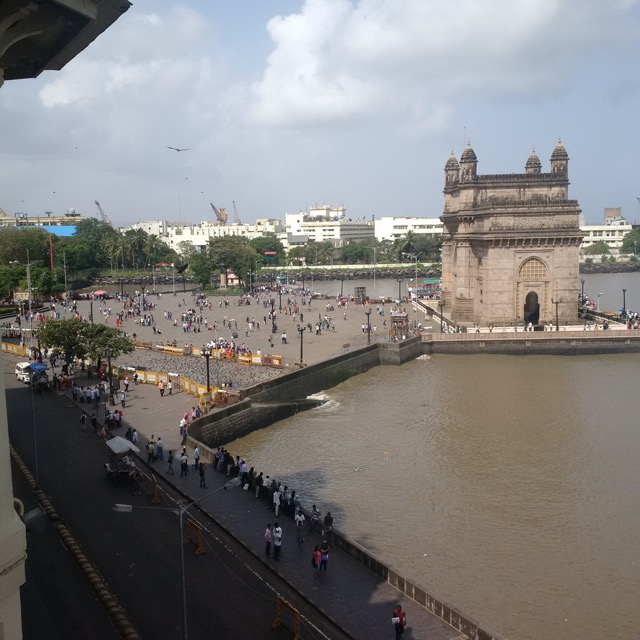

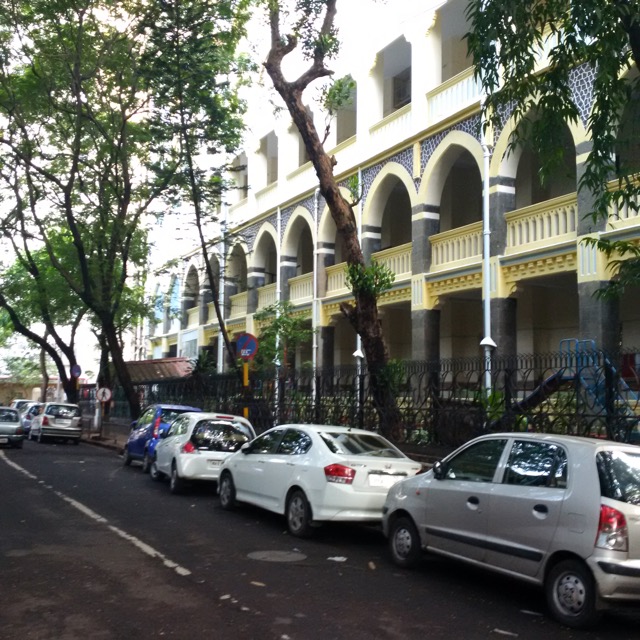
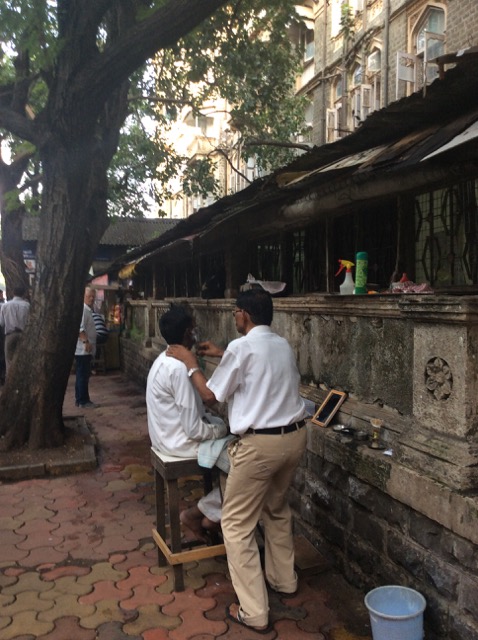
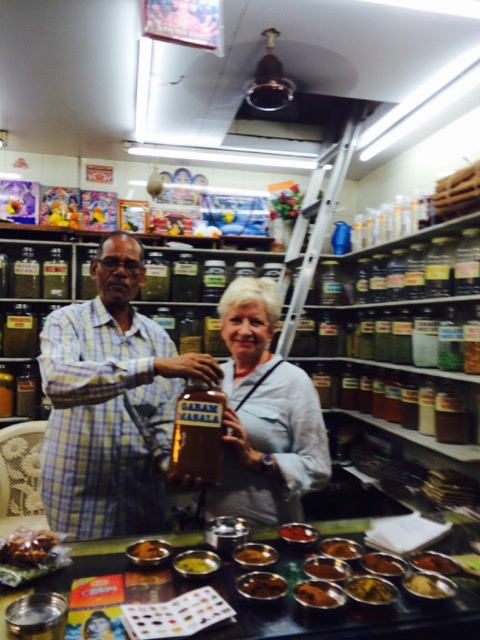
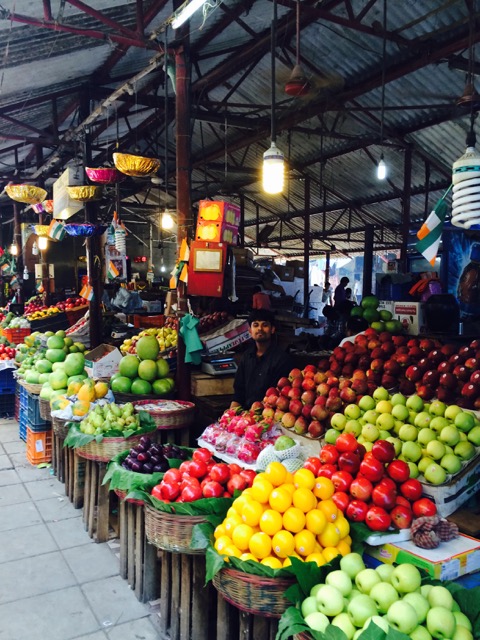
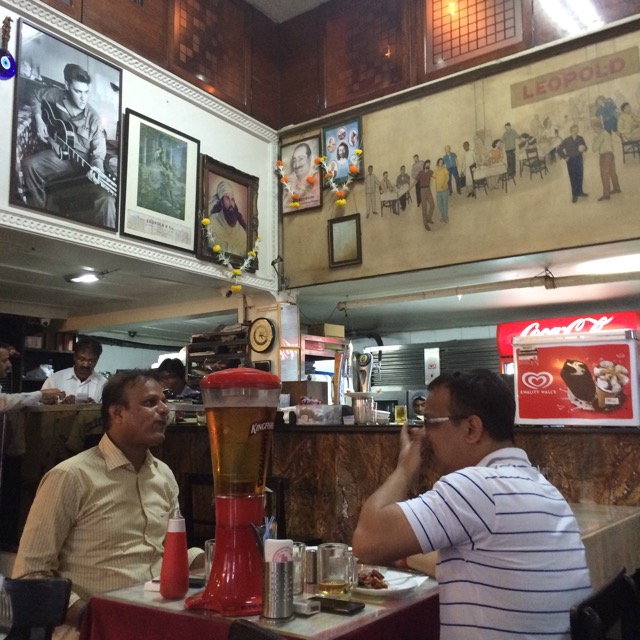

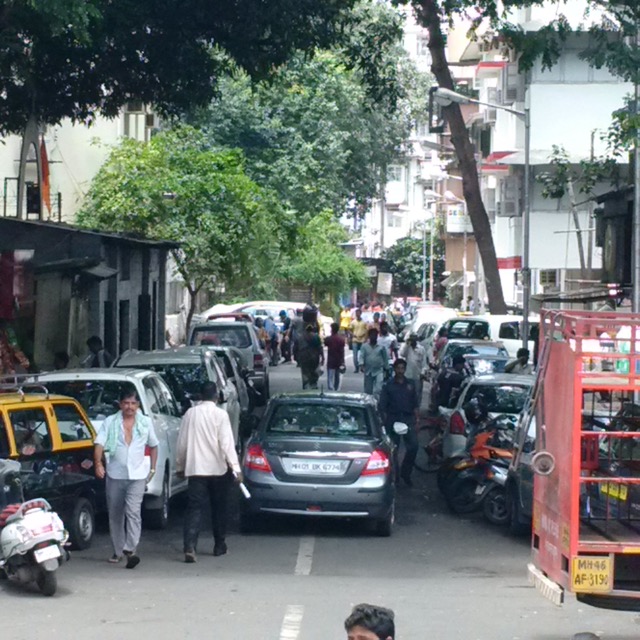




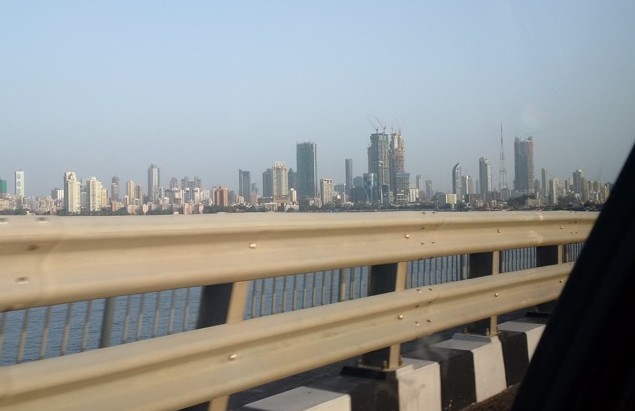
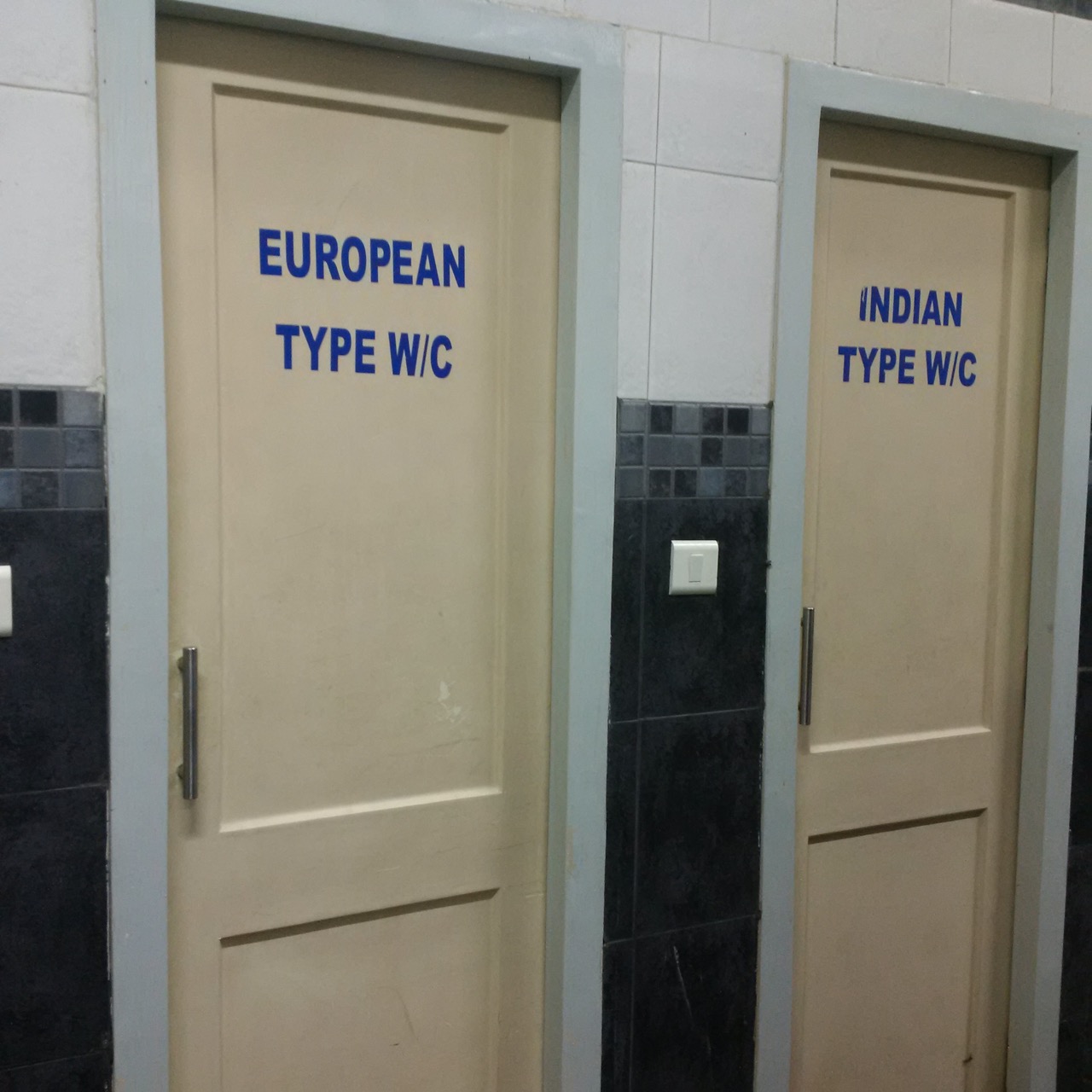



Another wonderful photo tour from the other side of the world. You and Karen are living the life – enjoy every minute! Can’t wait for the next installment. Blessings, Betty
Hi Fed and KR,
Thanks for sharing tour travels with us, I especially love the photo of KR fining door hardware for Corona Adobe.
Hug’s
Debbie
Nice pictures and commentary (as always). BTW – India has been saying the same message for the past 30 years about their time to industrialize and pollute! I can assure you that India has a middle class of about 350 million people (the total population of the US) and by our standards are very well off. And yes, Singapore is very clean, so clean that many of the Singaporeans have a weak immune system and are more susceptible to germs and colds when traveling.
Great fun to catch up on your latest travel. It’s time to cross paths and catch up in person. We are back in the country for a bit after completing the TransEurasian Odyssey and before we head off again!
Monika
What a GREAT trip down India WaY.
WE LOVE YOUR TRIP DESCRIPTIONS!
PLEASE KEEP US ON YOUR … MUST SEND TO LIST!
PETER AND ANETH